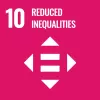Bulgaria
participants
The goal was to gather young people’s opinion on the barriers, challenges and opportunities for inclusion, digitalisation, sustainability and democratic participation in their town, considering their local context and reality. Exchange points of views or perspectives on these four topics, and present ideas to the local decision-makers.
The event was organised in 3 steps:
Stage 1: Introduction /45 min./
Facilitators: 2
Icebreaker - the event should begin with a quick ice breaker game. /10 min. max./
Rules of the game - it is important to establish rules at the very beginning of the event. The leading facilitator should explain what is acceptable behaviour and what is not. Following a code of conduct, including mutual respect, listening to each other, not interrupting each other, respecting each others’ opinion, avoiding any kinds of discrimination are some of the basics. /5 min./
Next, the introductory session /30 min. max./ will be facilitated by 1 ESN volunteer. All participants are asked to form a circle. During the introduction session the facilitator informs the participants about the purpose and goals of the event. The facilitator should get a general idea about the background of the participants and how familiar they are with the topic by asking them simple questions that do not have a right or wrong answer.
Guiding questions to encourage the conversion:
- What do we know about the EU?
- What is the Conference on the Future of Europe?
- What does the EU do for me and why does it matter to me?
- Examples of the EU contribution/benefits for me, my town, my country, the surrounding environment.
- What do we associate with inclusion, digitalisation, sustainability and democratic participation?
Please mind that these are only guiding questions and it is okay if not all of them are covered. Participants are not expected to develop speeches or to answer until the topic is exhausted. The aim is to warm-up for the next activities by starting to talk about the framework, context and main topics of the event in a friendly environment.
Stage 2: Campfire rounds session /30 min./
Facilitators: 4 /facilitators can be both from ESN (2) and from the local partner organisation (2)/
There are 4 thematic stations in the room called “inclusion”, “digitalisation”, “sustainability”, “democratic participation”. In the beginning of the event each participant is given 2 papers with the titles of 2 different sessions, numbered 1 and 2. Participants are distributed evenly and the groups should not exceed more than 5-6 people per station at the same time. When the session begins, participants should visit the station of their first paper and discuss the topic. The facilitator should present briefly the topic /5 min./ and encourage the participants to share their points of view and their ideas. The facilitator should write down the main ideas on a flipchart paper which is prepared in advance for the session. There are 10 min.for discussion. Once the time is over, participants should move quickly to the second station of their second paper. The same process should be repeated at the second station /15 min.in total/. The goal of this activity is to map the diversity of underlying challenges that young people in this town face in relation to the 4 topics.
Stage 3: Prioritising /15 min./
Facilitators: 2
The next step was to summarise the outcomes of the previous session. The facilitators should wrap-up the previous session. Next, with the facilitators’ help, participants should cluster and identify together up to 2 priorities per topic (inclusion, digitalisation, sustainability, democratic participation) based on the outcomes of the previous session. They should determine which aspect of each of the 4 topics they would like to discuss with the decision-maker and come up with a short description for each.




